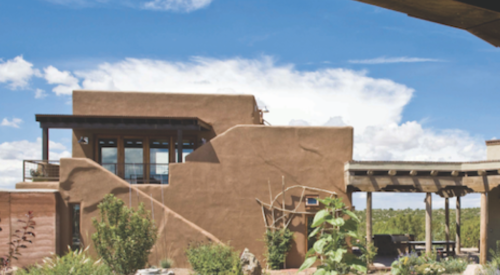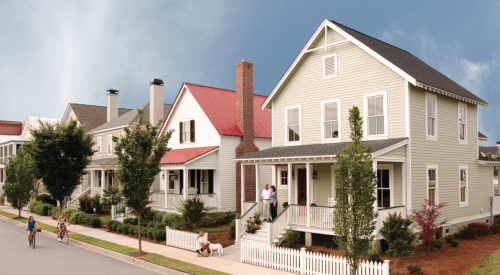It almost sounds too simple-just curve the streets instead of setting them in a grid or cul-de-sac pattern. But a land-planning concept that can decrease paving and infrastructure costs by upwards of 40% while increasing lot size and green space-without sacrificing density-doesn’t sound so simple.
But by winding the streets in his plans and varying the setbacks around those curves, Rick Harrison of Rick Harrison Site Design in St. Louis Park, Minn., not only created an alternative for assembly-line suburban projects, he created a bona fide innovation.
For this economical, ecological, profitable and popular land planning method, Professional Builder is honoring Rick Harrison with a Professional Achievement Award.
Harrison, a land planner for 32 years, was working on a Chicago-area project four years ago when he says he just "happened" upon the concept. "Just by winding the streets a bit more than usual I found that I was saving 20% - 25% on infrastructure costs and improving curb appeal," says Harrison. "I ran the numbers over and over, thinking I had made a mistake. But I hadn’t-the numbers were right."
While coving may cost builders a few lots in a particular development, the infrastructure savings and added buyer attraction more than make up for them. Harrison points to a recent project he did in Texas where he increased the average lot size from 9000 to 12,000 square feet. "We lost two lots in that plan, but the developer saved 48% on paving costs and was able to charge more for the bigger lots," says Harrison.
Planning boards like coving because of increased lot area with comparable density and the fact that houses are positioned so they don’t face each other directly. Environmental groups like coving because the reduction in paved surfaces reduces storm runoff and results in more green space interweaved with the houses. Engineering and public safety departments like coving because of the lack of four-way intersections and slower traffic because of the narrow, winding streets. For these reasons, Harrison’s land plan has gained industry acceptance. Now, a rapidly growing number of consumers like coving as well.
Harrison humbly admits that many of the concepts of coving have been used before in several high-end communities across the nation. But his refined concepts are applicable in middle-class and affordable subdivisions as well, bringing the benefits to more developers and builders. Small builders as well as Giants like Ryland, Centex, Pulte and D.R. Horton are now building 40 coved developments in 13 states. There are more than 50 currently in the planning stages. What began as a simple alternative to cookie-cutter subdivisions has turned into a popular way for builders to retain a country-like atmosphere as city suburbs spread out further and further. It also affords some builders on larger infill lots the opportunity to inject a little country feeling into long-established communities.
The word is out on coving and the concept is catching on. "We’ve done over 100 coved projects in the last three years," says Harrison. "And we get a new project every other day."
Also See:
Rutenberg Ushers Alternatives Into the Industry
Home Finishes Redefines Custom Service for Builders












